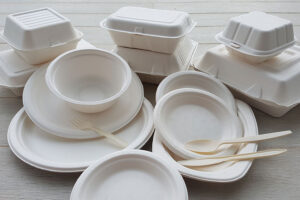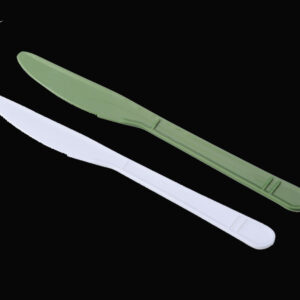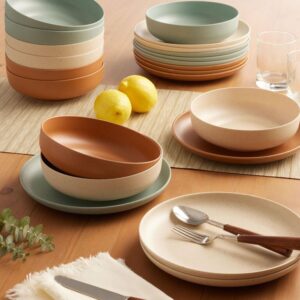Environmentally friendly Cornstarch tableware is made of natural corn starch and plant fiber as the base material, supplemented by bio-polyester polyol and other materials. Its starch content can reach 80%, which can be natural in the soil and natural environment. Degradation, no pollution and no damage to the environment.
It saves non-renewable resources such as petroleum, and has been tested by the national authoritative testing department, and all the physical and chemical indicators of hygiene have reached the national standards. It is an ideal substitute for the “sterilized tableware” that is currently widely used in the catering market but has been controversial.
advantage
Degradable: It is naturally degradable in nature (light and soil).
Good strength: It can meet the needs of consumers and has strong practicability.
No leakage: good sealing performance, no leakage.
No peculiar smell: Using corn starch as raw material, the product has a light popcorn fragrance.
Temperature resistance: It can withstand high temperature of 120℃ and low temperature of -20℃, and can be used safely in microwave ovens and refrigerators.
Grease resistance: can tolerate a lot of fat in food.
Product advantages
Starch-the raw material is natural: natural corn starch is used as the raw material, sustainable supply, so that natural resources are reused and recycled.
Degradable-safe and degradable: The raw material is natural polymer compounds, which can be degraded in the natural environment.
Environmental protection-green environmental protection: After the product is used, it can be quickly degraded by microorganisms in the natural environment and become plant nourishment. It truly originates from nature and returns to nature, effectively solving the environmental damage caused by white pollution.
Healthy-non-toxic: The raw materials are natural, the production process is aseptically produced, and the disinfection inspection is strict. After the product is degraded, it will not be toxic to the soil and air, and there is no secondary pollution.
Low-carbon-strong substitution: it can replace plastic products using petroleum as raw material and paper products using wood as raw material.
Standards: Fully comply with the “4R+1D” environmental protection standards (4R: low-consumption green materials can be recycled, reciprocating production 1D: degradable).








